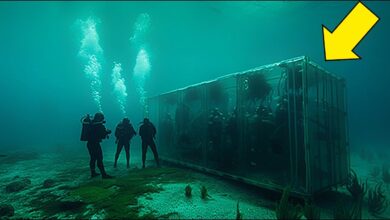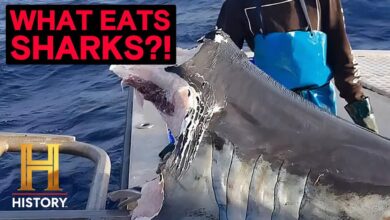The Way Orcas Prepare for De.ath Has Shocked the World

One particular incident involved killer whales (orca) in Norway, where a male orca showed signs of preparing for his death. On November 6, 2023, researchers observed a struggling male orca, supported by two other orcas holding him at the surface so he could breathe. Although whales can dive for up to 15 minutes, they usually surface to breathe every few minutes. The male orca looked very tired, but his group would not let him die. They held him at the surface for nearly an hour, until he was lifeless. Even after the orca died, the group of whales hovered around him, trying to revive him.
This event may be the first recorded death of an orca in the North Atlantic, perhaps anywhere in the world. An hour or two later, observers from another vessel saw the young orcas attempt to bring the male to the surface again. It is unclear whether the male survived, but their actions showed concern and care.
When considering the deaths of killer whales, the general consensus is that they die of old age, unable to surface for air. However, there are no documented cases of whales drowning without human intervention. For older whales, death is usually due to the inability to hunt and the gradual loss of strength due to starvation, not the inability to surface.

Killer whales are capable of sharing food within their families. One documented example is a disabled orca that was cared for and fed by its family. However, this ability does not seem to be universal. Older orcas realize that they are no longer as good at hunting as they once were and begin to prepare for death by becoming less active and less interested in food. When their strength is gone, they sink to the bottom of the ocean without much resistance.
After an orca dies, decomposition begins, and its carcass can provide food for an entire ecosystem on the seafloor. Whales can be eaten by sharks, seabirds, and many other scavengers. Decomposition can last from several months to years, with some special worms playing an important role in breaking down the bones.

Another heartbreaking story is about a mother whale named Taliqua, who tried to hold her dead calf above the water for 17 days after it died. While this action could be seen as an expression of grief, it could also be Taliqua’s desperate attempt to save her baby. Scientists believe that the behavior of killer whales may reflect the pain and emotions they experience, proving that they are capable of feeling and expressing emotions similar to humans.
In the end, a young whale refused to leave the lagoon where its mother died, expressing its grief. Rescue efforts were unsuccessful, and the young whale was forced to live in solitude until it escaped on its own. The story ends with the question of whether the young whale could survive alone and find its pod.








